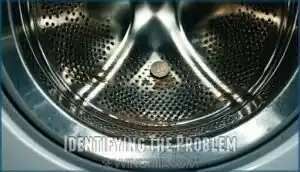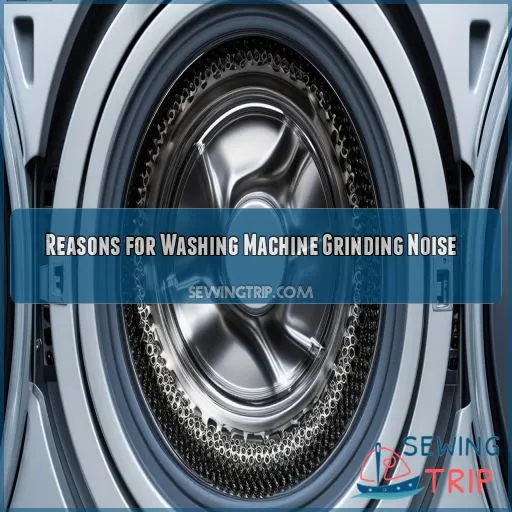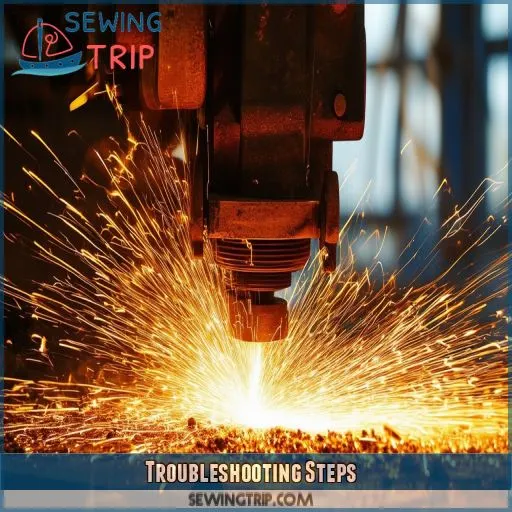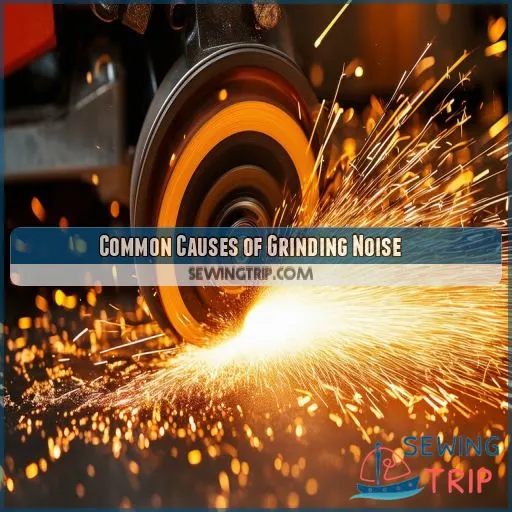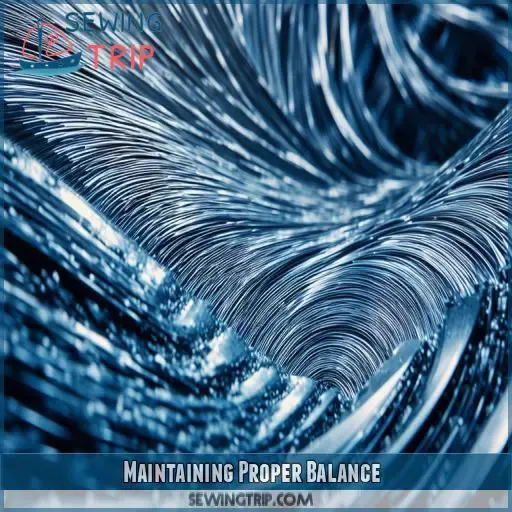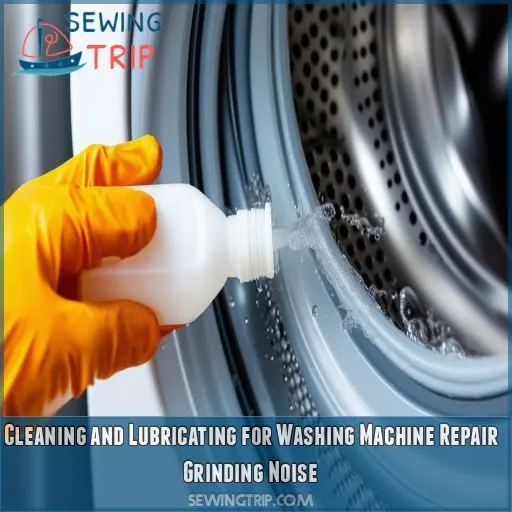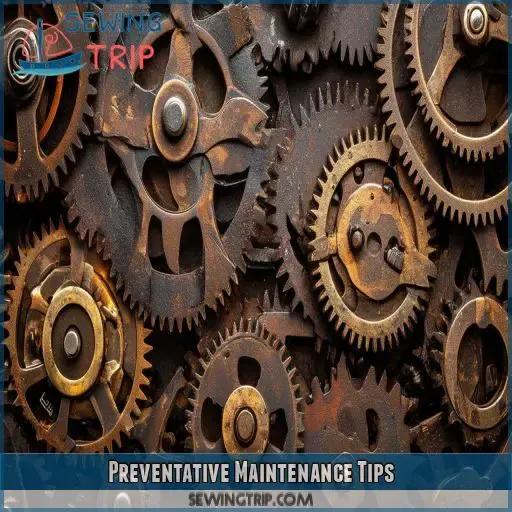This site is supported by our readers. We may earn a commission, at no cost to you, if you purchase through links.
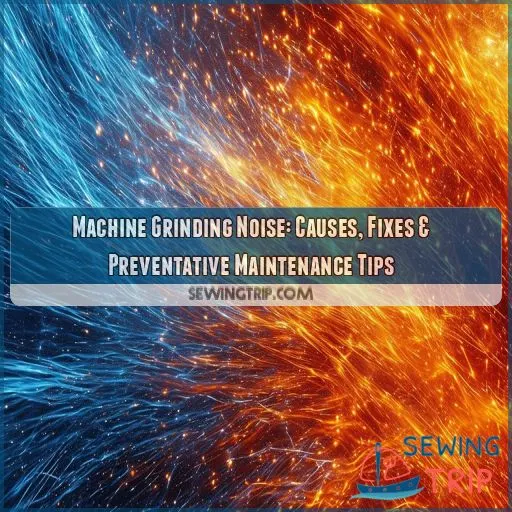
Common causes for your grinding noise machine include foreign objects and worn bearings, among others. We will take a closer look at these in this guide, together with troubleshooting steps and fixing measures to ensure smooth running.
Take control over the health of your appliance to prevent any costly repairs with our expert advice
Table Of Contents
- Key Takeaways
- Identifying the Problem
- Reasons for Washing Machine Grinding Noise
- Troubleshooting Steps
- Common Causes of Grinding Noise
- Maintaining Proper Balance
- Cleaning and Lubricating for Washing Machine Repair Grinding Noise
- Seeking Professional Help
- Preventative Maintenance Tips
- How to Replace a Washing Machine Pump
- How to Replace a Washing Machine Pulley
- Frequently Asked Questions (FAQs)
- Conclusion
Key Takeaways
- Don’t let your washer’s grinding noise drive you up the wall! Grab a flashlight and inspect the drum and pump for sneaky objects that might be causing the racket.
- If your washer’s bearings are worn out, it’s like having a grumpy old grandpa in your laundry room – replace them to bring back the smooth spin.
- A faulty drive belt can make your washer sound like a screeching cat – tighten or replace it to restore harmony.
- Remember, timely maintenance is like giving your washer a spa day – it’ll keep those grinding noises at bay and help it live a long, healthy life
Identifying the Problem
When one goes to determine the problem with their washing machine, which has begun to grind, it can be somewhat overwhelming.
But, of course, it’s essential to diagnose this cause accurately. Foremost, listen carefully, pinpointing if the sound is a pump, the sound of foreign objects, a worn bearing, a belt, or motor noise. Irrespective of the type of washer grinding noise, each one bears a rhythm and unique pitch.
See if the drum contains any slight, loose, or hard items that may cause it to make such noises, like coins or buttons. Ensure the washer is loaded correctly and not overloaded or unbalanced.
Reasons for Washing Machine Grinding Noise
Foreign objects, such as coins or small pieces of clothing, can get stuck in the drum or pump, causing grinding noises. Bearings and belt issues, along with potential motor and transmission failures, can also lead to persistent grinding sounds during operation
Foreign Objects Causing Noise
Foreign objects causing a washing machine’s grinding noise include:
- Stuck objects: Coins or small items can get stuck in the drum or pump.
- Underwire entrapment: Bra underwires and buttons often get caught in the seal.
- Zipper snags: Zippers and hooks snag on clothing.
- Lint buildup: Debris and lint can accumulate in the drain pump.
These issues can make your washing machine make awful grinding noises
Bearings and Belt Issues
Now that we’ve touched on foreign objects, let’s address common bearing and belt issues. Bearing failure or a strained belt can cause your washing machine to produce grinding noises. Damaged pulleys or worn U-joints also create similar problems. Here’s a quick reference:
| Issue | Symptoms | Solution |
|---|---|---|
| Bearing failure | Squealing, wobbling | Replace bearings |
| Belt strain | Drum not rotating | Adjust/replace belt |
| Pulley damage | Clunking noise | Replace pulley |
| U-joint wear | Irregular spin | Replace U-joint |
| Agitator dog slipping | Erratic agitation | Replace agitator dogs |
Motor and Transmission Failures
Grinding noises might point to motor failure or transmission failure. Motor damage often results in the washing machine making a loud noise or stopping altogether. Similarly, a failing transmission can cause grinding noise, impacting the agitator’s movement. For troubleshooting washing machine grinding noise, consider motor repair or transmission replacement to restore functionality and reduce disruptions
Troubleshooting Steps
Begin by checking both the drum and bearings for any signs of wear or foreign objects. Next, examine the motor and belt for damage, and evaluate the pump and pulley for any misalignment or defects
Checking the Drum and Bearings
First, turn off your washing machine. Check for damage in the drum or if there’s an object caught inside.
Next, check for wear on the bearings; lubricate as necessary.
Take a good look at the seals that surround the drum for any sort of wear; replace them if necessary.
Ensure proper alignment of the agitator.
A possible imbalance in the tub may also cause the grinding noise, so adjust accordingly
Examining the Motor and Belt
Inspect the motor and belt. The bearings in motors can wear out, which causes grinding or growling noises. Check the tension of the belt; it mustn’t be too slack or too tight.
Check that the drive belt size is correct to fit tightly around the pulleys. Check if the motor coupling is still in one piece. Proper pulley alignment will prevent unnecessary noise and operational problems
Evaluating the Pump and Pulley
First, disconnect your washer from power. To evaluate the pump operation and pulley alignment:
- Inspect the pump for clogging or impeller wear.
- Check hose connections for tightness.
- Examine the motor coupling for damage.
A misaligned pulley or worn pump can make a washing machine making loud noise at the end of the spin cycle
Common Causes of Grinding Noise
Worn bearings, drive pulley damage or strain, and a failed U-joint can all contribute to a grinding noise in your washing machine. Additionally, damaged or slipping agitator dogs, as well as a malfunctioning stator assembly, may also be the culprit behind that unpleasant grinding sound
Worn Bearings
Worn bearings can cause excessive vibration and unusual noises, disrupting your washing machine’s function. You might notice grinding noises and even water leakage. Regular maintenance can help prevent these issues. Here’s a quick comparison of symptoms:
| Symptom | Indicative of Worn Bearings |
|---|---|
| Grinding Noise | Yes |
| Excessive Vibration | Yes |
| Water Leakage | Sometimes |
Drive Pulley Damage or Strain
A worn or broken drive pulley can cause the drum to grind or stop functioning. It may begin slipping off, especially when the load it’s carrying is heavy.
Look at your pulley and check for any cracks, looseness, or damages. You need to replace your drive pulley immediately in case of any defect.
A loose drive pulley causes straining and, hence more severe mechanical problems and noise
Failed U-Joint
A worn-out U-joint gives off grinding noises and, at times, is very damaging to your washer. Maintenance of the U-joint only involves checking for wear since it might develop cracks or even break.
It wears off quickly due to constant use, but its life can be prolonged by keeping it well-lubricated. Should it be damaged, a U-joint requires urgent replacement to prevent further problems.
Always check for any damages on your U-joint for smooth and noise-free operations
Agitator Dogs Are Damaged or Slipping
Small but essential parts, the dogs can wear out, causing the washing machine’s gears to slip during the agitation cycle. What happens is that this generates a grinding noise.
The damaged agitator dogs lose grip, and the movement becomes uneven. Check for wear, and if needed, change them to avoid further problems in the tub bearings or the drum seal
Stator Assembly Malfunction
An incorrect stator assembly might make grinding noises due to many faults, from motor winding to coil resistances. Keep an ear out for:
- Overheating, causing washer shutdown.
• Electrical faults, resulting in intermittent operation.
- Abnormal vibrations or grinding noises might suggest problems with the stator.
These should be addressed quickly to guarantee your washer runs smoothly.
Maintaining Proper Balance
It is good to create proper balance inside your washing machine to not cause drum wobble by the correct alignment and to alleviate vibration. First, make sure the level washer is on an even surface by adjusting its feet. This can minimize excessive movements and overheating. Load your machine with your regular, evenly distributed clothes: that doesn’t mean heavy items on one side and light on the other.
| Issue | Symptoms | Remedy |
|---|---|---|
| Drum Wobble | Excessive shaking | Adjust feet, level washer |
| Bearing Wear | Grinding noise | Schedule bearing replacement |
| Imbalanced load | Off-balance act | Distribute clothes properly |
| High Vibration | Loud during spin cycle | Stabilize surface |
| Over heating | Motor cut off | Check and balance the washer |
A good balance maintains your washer so that it remains efficient and quiet.
Cleaning and Lubricating for Washing Machine Repair Grinding Noise
Now that you’ve checked that your washing machine is shipped with the correct weight, the next step to take is a more preventative measure to avoid grinding noises – this is a form of maintenance; cleaning and lubricating will need to be done about every 6-12 months. Begin:
Wipe the drum, gasket, and accessible moving parts with the cloth moistened in warm water, removing accumulated lint, debris etc.
– Use a little washing machine-safe lubricant on the agitator shaft, bearings, and others of the same kind.
- Checking the drain pump filter and removing any clogs.
- Checking the drive belt for wear and replacing as necessary.
- Clearing the drain hose of any blockages or kinks.
These easy steps will help prevent further grinding sounds and extend the life of your good old washer.
Seeking Professional Help
If cleaning and lubricating your washing machine didn’t do the trick, it’s time to consider seeking professional help. Qualified technicians bring professional experience and can diagnose issues beyond DIY fixes. Their expert recommendations ensure you don’t overlook hidden problems. When hiring, request a repair estimate, and check if the repair falls under warranty coverage for potentially lower costs. Don’t ignore these signs—acting promptly prevents further damage.
| Reasons to Seek Help | Benefits | Drawbacks |
|---|---|---|
| Safety Concerns | Professional Experience | Can Be Costly |
| Complex Repairs | Expert Recommendations | Scheduling Delays |
| Warranty Coverage | Warranty Integrity | Potential Wait Times |
| Reliability Assurance | Accurate Diagnoses | Trust Dependency |
Liberate yourself from worry by letting the pros handle it!
Preventative Maintenance Tips
Proactive maintenance is the heart and soul of every individual machine and avoids that irritating grinder-type noise. Regular care of your washing machine will increase energy effectiveness and perform more smoothly. Some essential tips for appliance care and noise reduction include:
- Check for Loose Objects: There are no spare coins or buttons that sneak into the drum.
- Lubricate Moving Parts: Be sure to grease bearings and other moving parts at scheduled intervals.
- Balance the load: Make sure to have an even distribution of clothes without unnecessary stress on the motor and bearings.
- Filter Cleaning: Clean the lint filter and drain pump regularly by removing the accumulated debris causing an impediment to the work.
These simple steps ensure a quieter, longer-lasting machine
How to Replace a Washing Machine Pump
Replacing a washing machine pump is the best solution for that noisy washer pump. The following steps need to be taken:
- Turn off and unplug from the socket of the washer for safety.
- Locate the pump at the bottom of your machine, usually toward the front.
- Remove screws and detach hoses with caution, inspecting the pump hoses for blockages. A towel may prove useful in case of residual water.
- Mount the new pump by following the reverse order of the removal steps. Ensure all connections are secure.
Regular maintenance, such as pump filter cleaning, prevents pump impeller damage. The pump is a slightly expensive replacement part that’s essential for keeping your machine running without noise.
How to Replace a Washing Machine Pulley
Replacing a washing machine pulley just requires the proper tools and parts. Unplug the machine for your safety. You’ll want to take off this back panel to access the pulley. You’ll usually need a wrench and screwdriver for this work.
- Remove the old pulley: Unscrew the retaining bolt and slide the pulley off.
- Fit the new drum pulley: Simply slip it over the shaft of your drum and bolt it into position.
- Reassemble: Set back the rear panel and tighten all screws.
Consider upfront both part availability and cost estimation. Most of the time, replacing a pulley costs $20 to $50. It’s an entirely DIY-able task if you find yourself comfortable with essential tools—not a lot goes into it. If you have a technician handle it, it might increase the labor and thus the price, but you’re sure it will be done professionally.
Frequently Asked Questions (FAQs)
Why does my washing machine make a grinding noise?
Think of your washing machine like a symphony gone out of tune. A grinding noise often means foreign objects trapped in the drum or pump, worn bearings, a faulty drive belt, or transmission issues disrupting its harmony
What should I do if my machine makes a grinding noise?
First, stop the machine immediately. Inspect for any foreign objects in the drum or pump. Check the drive belt for damage and bearings for wear. If necessary, consult a service provider to prevent further damage
Why does my computer make a grinding noise?
Your computer’s grinding noise likely stems from a failing hard drive, obstructed fan, or dust buildup. Regular maintenance, like cleaning internal components and checking for loose parts, can help identify and resolve the issue
How to fix LG top load washer grinding noise?
If your LG top load washer sounds like it’s chewing rocks, check for foreign objects, consult the manual, and inspect the drive belt, bearings, and transmission. Don’t hesitate to call a technician if needed
What tools are needed for washer repairs?
You’ll need a screwdriver set, pliers, adjustable wrench, multimeter, nut driver, socket set, flashlight, and a towel. These tools will let you address most washer repairs efficiently and effectively
How often should I inspect the bearings?
Inspect your washer’s bearings every six months. Regular checks stop small issues from becoming major headaches. Imagine your machine humming along smoothly, saving time and stress by catching problems before they spiral out of control
Are grinding noises covered under warranty?
Grinding noises may be covered under warranty if they’re due to manufacturing defects. Always check your warranty terms. If the noise stems from wear and tear or misuse, it likely won’t be covered
Can detergent choice affect washer noise?
Choosing the wrong detergent can create excess suds, leading to improper draining and straining the motor. This strain could result in unusual noises, particularly during the spin cycle. Always use the recommended detergent type
What parts typically wear out fastest?
The parts that seem to wear out the quickest on your washer are the drive belt, drum bearings, and agitator directional dogs. Keeping a firm eye on these means smooth functioning and no sudden breakages.
Conclusion
So you treat your washing machine like a well-oiled machine and ignore that grinding, growling noise at your peril. But with provided detailed troubleshooting—from foreign objects to worn bearings—you might just be able to fix the problem.
Periodic maintenance and timely repair can help save one from quite significant overhaul changes. Always remember that proactivity, through regular checks and professional opinions, when in need, can keep those machine grinding sounds from the past, keeping this appliance running efficiently

